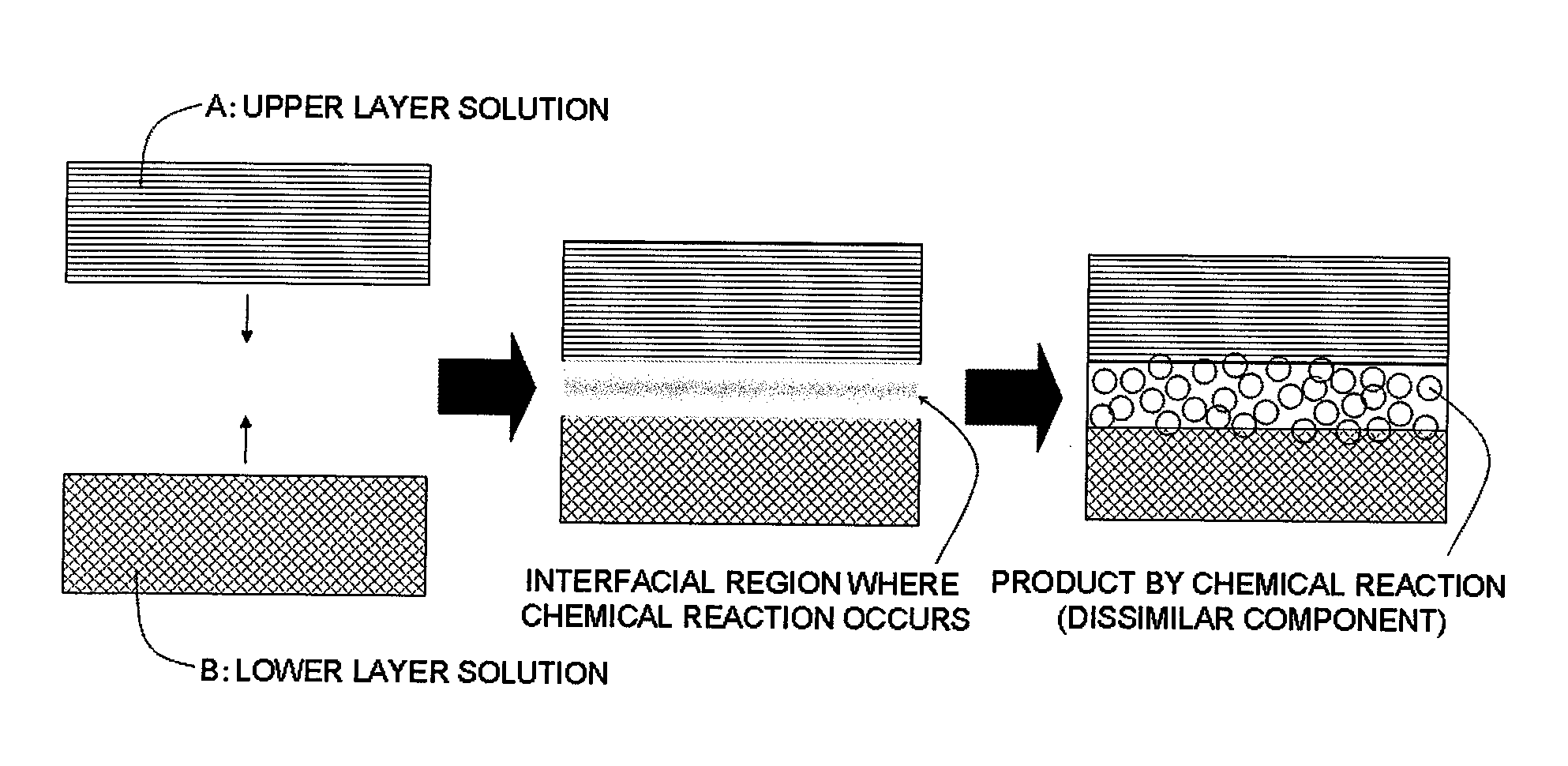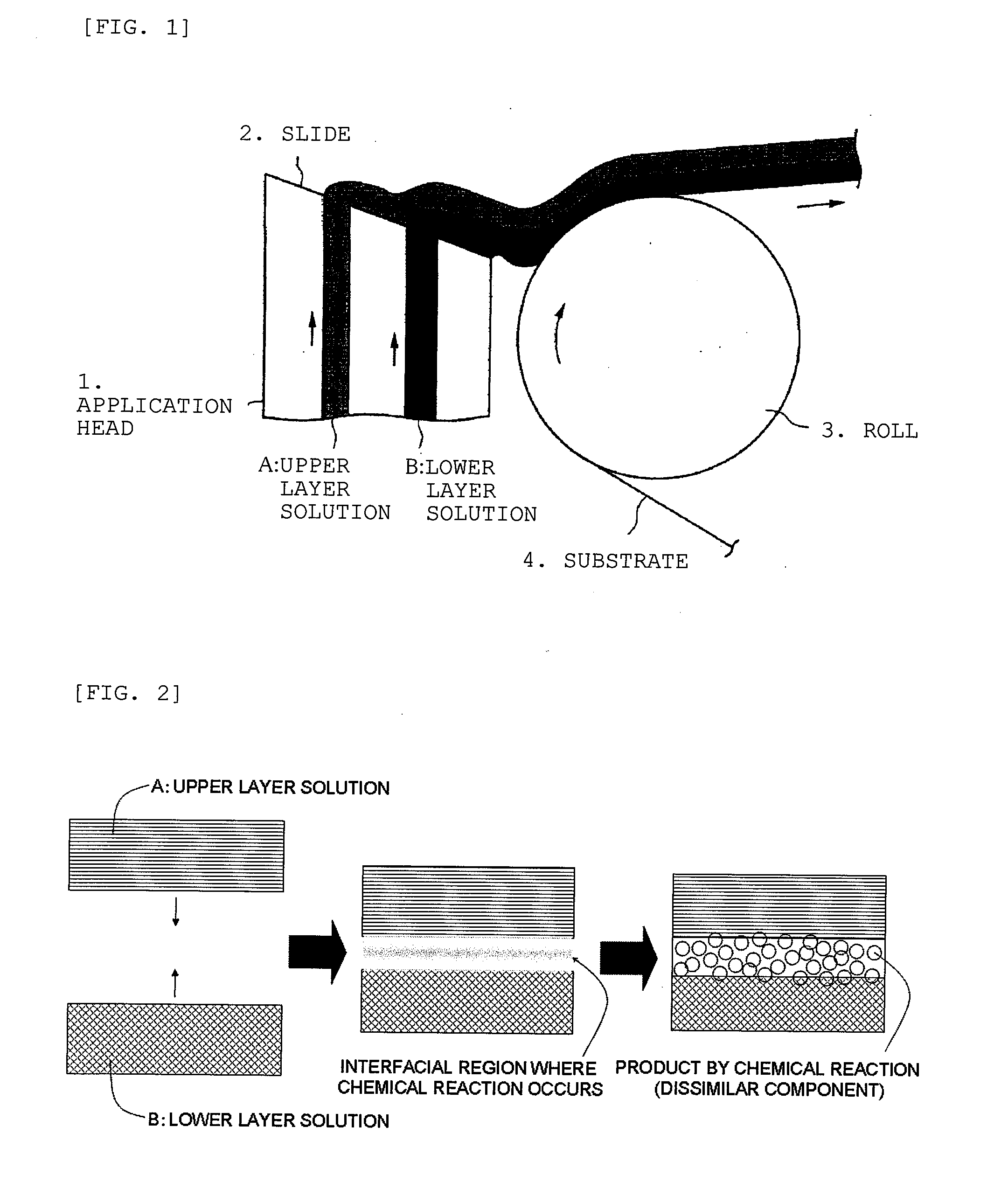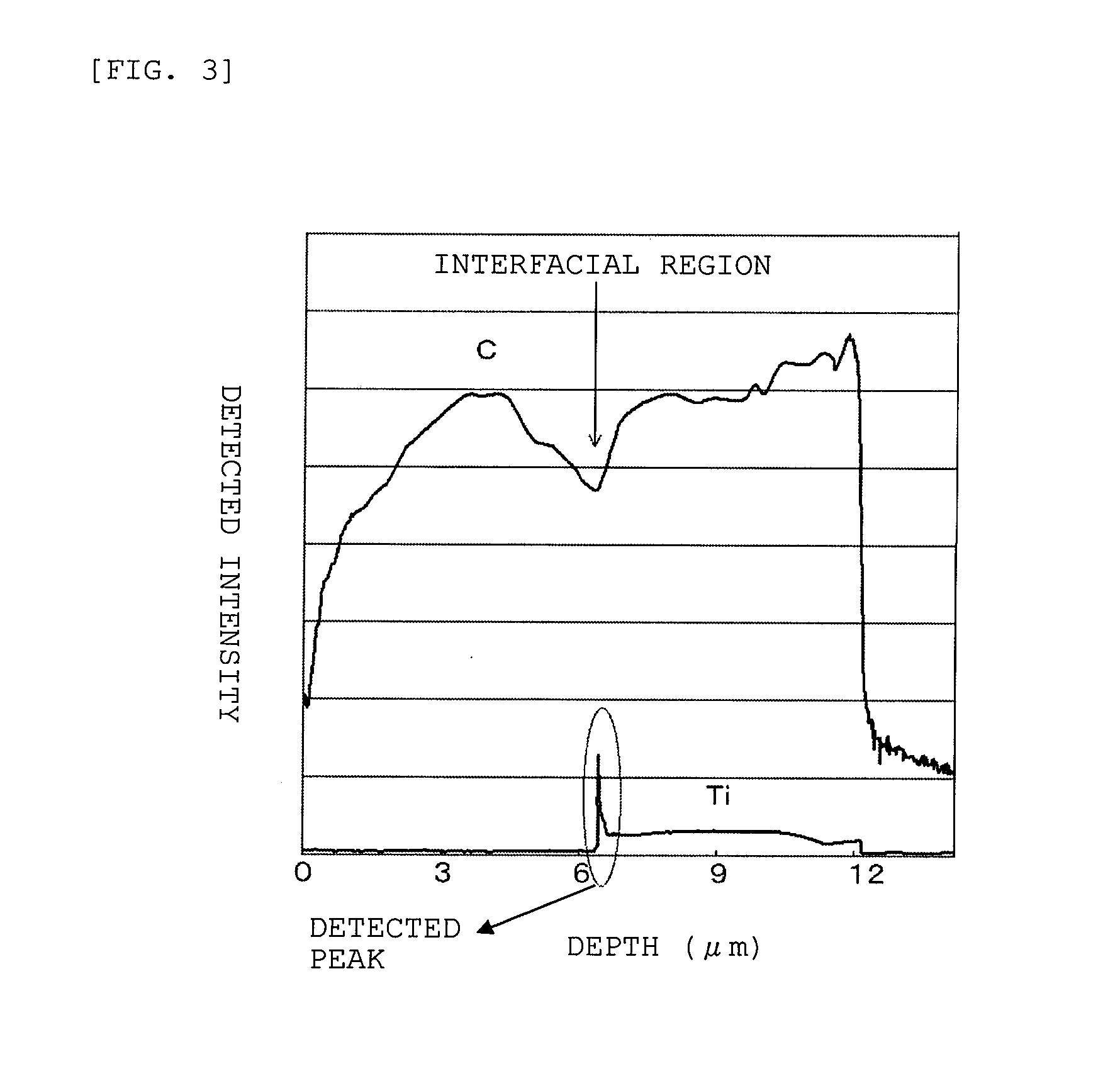Laminates and process for producing laminates
- Summary
- Abstract
- Description
- Claims
- Application Information
AI Technical Summary
Benefits of technology
Problems solved by technology
Method used
Image
Examples
examples
[0128]Next, the present invention is described in more detail by way of examples. However, the present invention is by no means limited by those examples.
(A) Preparation of Solution for Crosslinking Reaction
production example a-1
Aqueous Solution for Upper Layer
[0129]20 Grams of a polyvinyl alcohol (manufactured by KANTO CHEMICAL CO., INC., weight-average molecular weight: about 100,000), 155 g of an aqueous acrylic resin (component for forming a layer, “WATERSOL (registered trademark) PW-1100” manufactured by DIC Corporation, weight-average molecular weight: about 50,000, water emulsion having a solid content concentration of 45 mass %), and 0.5 g of indigo (manufactured by KANTO CHEMICAL CO., INC.) as a colorant for identification were mixed and stirred at room temperature. Thus, a blue aqueous solution A-1 (concentration of the polyvinyl alcohol: about 12 mass %) was obtained.
production example a-2
Aqueous Solution for Lower Layer
[0130]Grams of a crosslinkable titanium compound (“ORGATIX (registered trademark) TC-400” manufactured by Matsumoto Trading Co., Ltd., component; titanium diisopropoxybis(triethanolaminate)), 130 g of an aqueous polyester resin (Vylonal MD-1500 manufactured by Toyobo Co., Ltd., glass transition temperature: 77° C., weight-average molecular weight: about 20,000, solid content concentration: 30 mass %), and 0.5 g of anthraquinone (manufactured by KANTO CHEMICAL CO., INC.) as a colorant for identification were mixed and stirred at room temperature. Thus, a red aqueous solution A-2 (concentration of the crosslinkable titanium compound: about 5 mass %) was obtained.
(B) Preparation of Solution for Agglomeration Reaction Based on Salting Out
PUM
| Property | Measurement | Unit |
|---|---|---|
| Length | aaaaa | aaaaa |
| Width | aaaaa | aaaaa |
Abstract
Description
Claims
Application Information
 Login to View More
Login to View More - R&D
- Intellectual Property
- Life Sciences
- Materials
- Tech Scout
- Unparalleled Data Quality
- Higher Quality Content
- 60% Fewer Hallucinations
Browse by: Latest US Patents, China's latest patents, Technical Efficacy Thesaurus, Application Domain, Technology Topic, Popular Technical Reports.
© 2025 PatSnap. All rights reserved.Legal|Privacy policy|Modern Slavery Act Transparency Statement|Sitemap|About US| Contact US: help@patsnap.com



